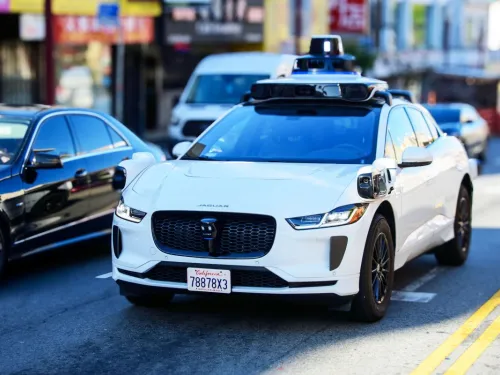
Waymo and Uber Prepare to Launch Robotaxi Service in Atlanta in Summer 2025
The partnership between Waymo, Google's autonomous technology company, and Uber advances another step. On Tuesday (April 15, 2025), the companies announced that the "Waymo on Uber" robotaxi service will arrive in Atlanta this summer, following a successful launch in Austin last month. The announcement reinforces the companies' positions in the race for autonomous mobility and brings new perspectives for the future of urban transportation.
Partnership and Operation Details
The service will allow Uber app users in Atlanta to request rides in Waymo's autonomous Jaguar I-PACE vehicles at no additional cost compared to traditional options like UberX or Uber Comfort. The division of responsibilities is clear:
- Waymo handles autonomous driving technology, technical assistance, and passenger support.
- Uber manages the fleet, including cleaning, maintenance, recharging, and logistics operations, in collaboration with the company Moove (recently renamed Avomo).
Initially, the robotaxis will operate in a 65-square-mile area, covering regions such as Downtown, Buckhead, and Capitol View, with future expansion plans. To participate, users must update the Uber app, access "Trip Preferences" in settings, and join the interest list.
Atlanta: A Strategic Market
Choosing Atlanta is not random. The city is an emerging tech hub and already hosts tests from other autonomous vehicle companies, such as Zoox and Avride. Waymo started manual mapping in the region in April 2024, and since February 2025, has offered experimental rides for employees. With complex roads and heavy traffic, Atlanta serves as an ideal "proving ground" to validate the system's adaptation to new environments.
Safety and Challenges
Safety remains a priority. Waymo highlighted that its system avoided collisions with injuries 3.5 times more than human drivers in San Francisco and Phoenix. However, the company faced federal investigations in 2024 due to isolated incidents, such as collisions with towed trucks. To mitigate risks, the initial fleet will be small and gradually expanded.
The Broader Context of Autonomous Mobility
The collaboration between Waymo and Uber represents a historical shift. The companies were once fierce rivals, with Uber accused of stealing trade secrets from Waymo in 2018. After a legal settlement, Uber gave up developing its technology and opted for partnerships, while Waymo focused on enhancing its platform.
Today, Uber works with 14 autonomous vehicle companies globally, including Waymo and WeRide (in Abu Dhabi). Meanwhile, Waymo operates commercially in San Francisco, Phoenix, Los Angeles, and Austin, conducting more than 200,000 weekly trips.
The Future of Robotaxis
The launch in Atlanta consolidates a year of expansion for Waymo, which plans tests in 10 cities in 2025 and debut in Miami in 2026. Uber, on its part, sees robotaxis as a complement to its traditional fleet, ensuring continuous availability even during peak hours.
For passengers, the experience promises to be similar to a regular Uber, but without a driver. During tests in Austin, users reported surprise at the absence of a steering wheel but quickly adapted to the silent and smooth journey.
Conclusion
The arrival of robotaxis in Atlanta marks a crucial step in the democratization of autonomous technology. If successful, the Waymo-Uber partnership could inspire similar models in other cities, accelerating the transition to safer and more sustainable transportation. Meanwhile, regulatory issues, public acceptance, and performance in unpredictable scenarios will continue to shape the pace of this revolution.
Stay tuned: The official launch is scheduled for June 2025. Users in Atlanta can already sign up for the interest list to ensure priority access.
This article was based on information from the portals TechCrunch, Fast Company and Electrive, as well as official statements from Waymo.
Add new comment